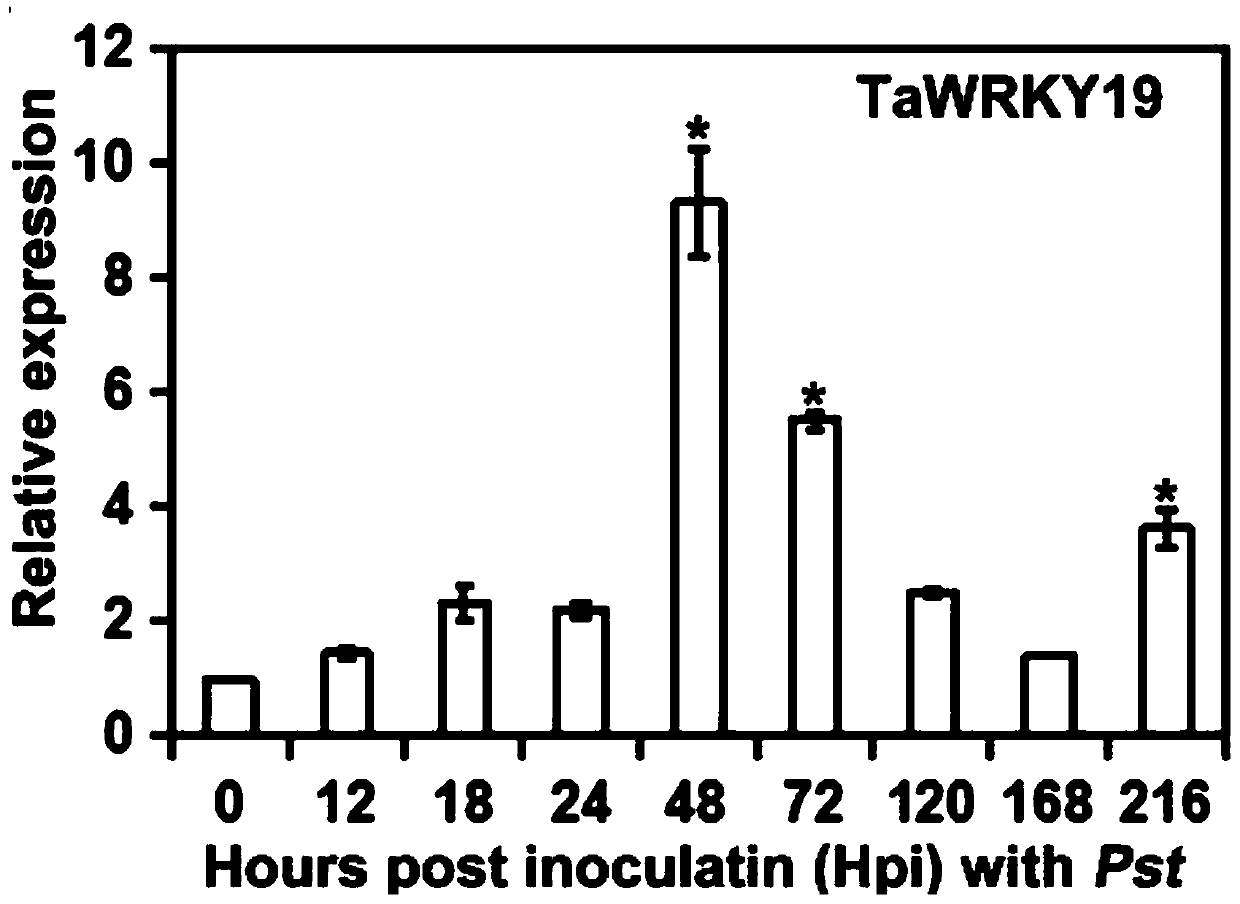Transcription factor for improving rust disease resistant wheat varieties and screening and obtaining method of transcription factor
A technology for transcription factor and rust resistance, applied in the fields of plant genetic improvement, chemical instruments and methods, and botanical equipment and methods, can solve the problems of complexity, low transformation efficiency, and huge genome, and achieve improved resistance and the number of spores produced. The effect of reduction, biomass reduction
- Summary
- Abstract
- Description
- Claims
- Application Information
AI Technical Summary
Problems solved by technology
Method used
Image
Examples
Embodiment Construction
[0036] In order to make the objectives, technical solutions, and advantages of the present invention clearer and more comprehensible, the present invention will be further described in detail below in conjunction with embodiments. It should be understood that the specific embodiments described here are only used to explain the present invention, but not to limit the present invention.
[0037] In view of the problems existing in the prior art, the present invention provides a transcription factor for the improvement of wheat rust-resistant varieties and a method for obtaining it which is somewhat inferior. The present invention will be described in detail below with reference to the accompanying drawings.
[0038] The transcription factor used in the improvement of wheat rust resistant varieties provided by the embodiment of the present invention is TaWRKY19 and the WRKY transcription factor BdWRKY67 in Brachypodium with the highest similarity.
[0039] The encoding ORF sequence of t...
PUM
 Login to View More
Login to View More Abstract
Description
Claims
Application Information
 Login to View More
Login to View More - R&D
- Intellectual Property
- Life Sciences
- Materials
- Tech Scout
- Unparalleled Data Quality
- Higher Quality Content
- 60% Fewer Hallucinations
Browse by: Latest US Patents, China's latest patents, Technical Efficacy Thesaurus, Application Domain, Technology Topic, Popular Technical Reports.
© 2025 PatSnap. All rights reserved.Legal|Privacy policy|Modern Slavery Act Transparency Statement|Sitemap|About US| Contact US: help@patsnap.com



